Eurocom Monster 1.0: Clevo's Little Monster
by Vivek Gowri on May 18, 2012 4:55 AM EST- Posted in
- Laptops
- Clevo
- Eurocom
- Ivy Bridge
- Kepler
Everything But the Kitchen Sink?
While the internal hardware is basically second to none, I have mixed feelings about the Monster from a device hardware standpoint. Clevo has never been mistaken for a design powerhouse, and the Monster does nothing to change that. Like most other Clevo notebooks, the design is a bit staid. It’s inoffensive, but relatively boring. The word that comes to mind is generic. In stark contrast to the heavily design-centric ultrabooks coming out these days, it’s a bit jarring. Obviously, the form factor isn’t conducive to a sleek and beautiful design, but even so, there aren’t any distinguishing characteristics to the design in general.
The chassis is constructed primarily of plastic, with a rubberized soft-touch finish on the interior and lid. There’s a square patterning on the palmrest, touchpad, and lid, giving all the surfaces you touch a subtle texture that feels nice to the touch. It feels pretty solid, no creaks or anything of the sort, and the lid is pretty resistant to torsion. It’s a pretty chunky laptop, and it’s built to match. I wouldn’t necessarily say it’s rugged or tough in the same way as a ThinkPad, but this is a notebook that can take some abuse, something you can toss around without being afraid of scratching or denting.
From a form factor standpoint, the Monster is pretty interestingly situated. It has a smaller footprint than the M11x (the W110ER comes in at a quarter of an inch wider but almost an inch less deep), though a little bit thicker. The LCD bezel is thankfully not nearly as large or as distracting as the one on the M11x, but a major complaint we had with the smallest Alienware was that it had a chassis large enough to accommodate a bigger screen; that holds true for the W110ER as well. While a 13.3” screen would have required too many dimensional changes to fit (unlike the M11x, which already had the depth to fit a 13” screen), a 12.5” screen could easily fit within a slightly widened chassis (see the 12.5” Samsung Series 3 or ThinkPad X220 at 11.75” and 12.0” wide, respectively). The 1.8kg/3.95lb weight is roughly where one would expect, heavier than Sony’s 13” SA-series but a half pound lighter than the outgoing M11x R3. Considering the computing prowess on tap here, the weight and thickness are small sacrifices to make. Still, it would be nice if the next person to make a notebook in this vein would drop the pretense of a gaming 11.6” ‘ultraportable’ and spec a screen that fit the chassis better.
The thickness actually makes a surprising difference. There’s a steep taper near the front of the notebook that allows Eurocom to quote 0.51” at thinnest point, but it’s basically 1.25-1.5” thick through most of the body. Hilariously, it’s more than twice as thick as the ASUS Zenbook UX21. Compared to ultrabooks and even newer non-ultrabook thin and lights, this feels like a notebook from a different era. Specifically, it reminds me a lot of the 12-13” notebooks from around five years ago—Dell’s XPS M1210, the ASUS W5F and W7J/W7S (a notebook that I have a lot of affection for), even the Lenovo V100 and MSI S262. Note that all of these systems came out with Core Duo processors (and were later upgraded to Merom), so we’re talking the early-mid 2006 timeframe. Alienware had a similarly chunky system in the M11x, but it had styling and details that made it look and feel like a modern system, and the design language made it instantly recognizable as an Alienware. The Monster simply lacks that distinctive characteristic.
OriginPC offers a custom lid design with their W110ER (called the EON11-S), a sleek looking part that’s actually very reminiscent of the M11x lid. They offer it in matte black, matte red, or glossy metallic silver, and based on the pictures, it seems like a nice improvement over the stock lid. However, it’s worth noting that the EON11-S is more expensive than Eurocom’s Monster and doesn’t offer the upgraded screen as an option either (at least not at the time of writing).
Looking around the Monster, we see a healthy allocation of ports—Gigabit LAN, VGA, HDMI, headphone/mic, and two USB 3.0 ports on the left side, along with a USB 2.0 and the AC port on the right. The left side also has a large vent, while the back is dominated by the removable 62Wh battery. The front has notification LEDs for power, battery, and disk usage but is otherwise clean. The Synaptics touchpad works as expected and features multitouch gestures and scrolling—two finger scroll works well, and the presence of physical mouse buttons is a relief.
The most offensive part of the design is actually the keyboard, which has slightly shrunken keys and a layout designed to confuse and frustrate. The entire right-hand side feels truncated, with the forward slash and right shift keys narrower than normal and the arrow keys also narrow (but still full height). For reasons I cannot fathom, there is a second Fn key on the right hand side, located just above the right arrow key. Page up/down and home/end both exist only in the land of Fn keys, and the Esc key is also oddly small. Safe to say, I’m not a fan. The downsized keys don’t bother me much at all, though I suspect that a larger guy like Jarred would probably curse the keyboard anytime he had to use it. On the bright side, the keypresses are positive, with a decent amount of travel in the z-direction, and there's a pleasing lack of flex in the keyboard overall. Once you get used to the layout of the secondary keys, it's a decent keyboard.


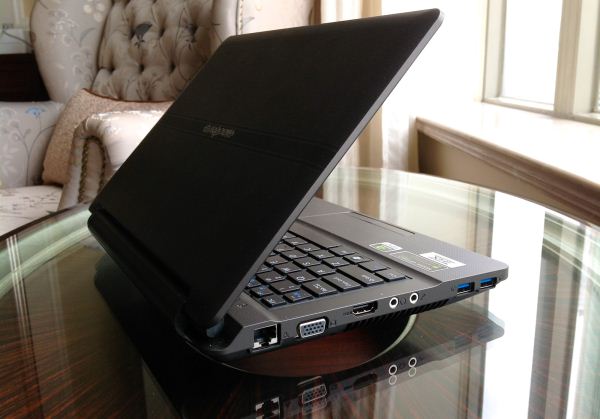






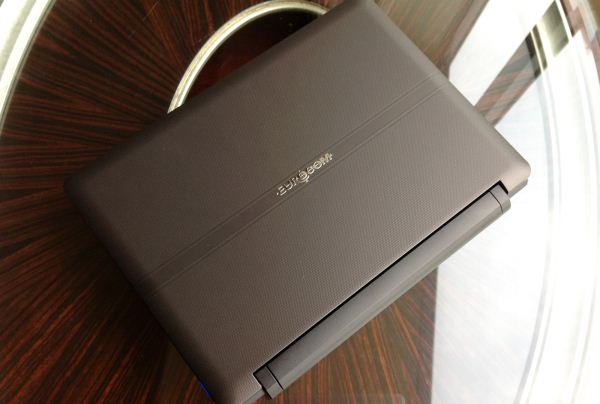
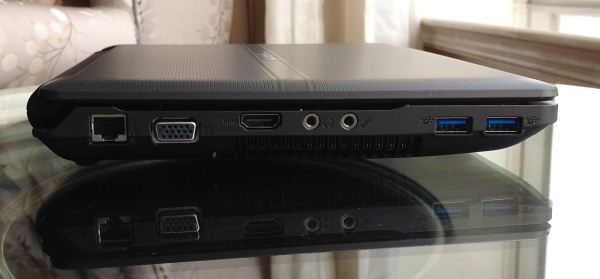
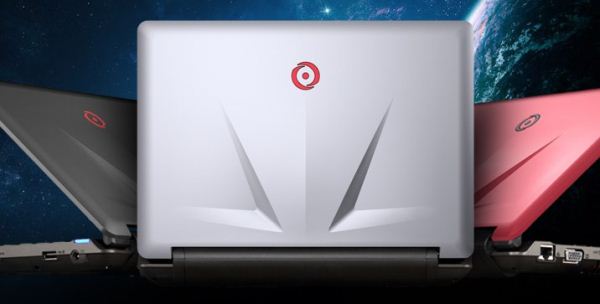
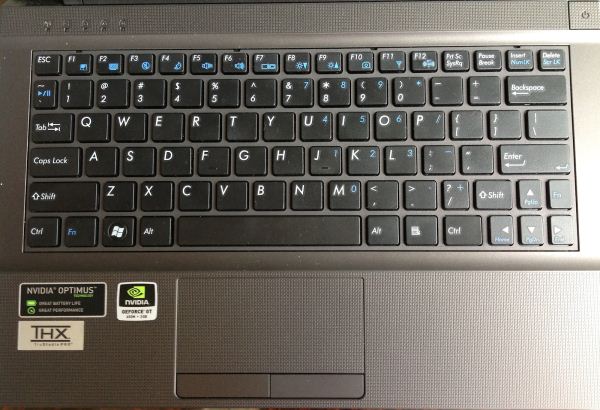








47 Comments
View All Comments
JarredWalton - Friday, May 18, 2012 - link
Your circle of friends and acquaintances must be a heck of a lot more tech savvy than mine, because I can count the number of people I've helped with computer issues that have wired home networks on one hand. I've even encouraged many to consider running wires, and they almost always decline. Granted, I don't live in an area where there are tons of apartment buildings, and neither do most of my family/friends (Washington, Colorado, Utah, Wyoming, Arizona is where we're all located).Daniel Egger - Sunday, May 20, 2012 - link
> ... computer issues that have wired home networks on one handOver here every non-mobile internet user gets a router free or heavily subsidised when closing a contract or changing the provider. 4 ethernet ports are the undisputed standard (though some vendors try to cut costs by only providing 2) on those things and the latest when WLAN problems pop up people will try to use them; usually earlier.
In fact I used to design software for routers and although (thanks to mobile phones) WLAN became more and more important over the years I do not know of a single end-customer or acquaintance who doesn't have at least one Ethernet connection in use.
JarredWalton - Monday, May 21, 2012 - link
A single Ethernet connection doesn't constitute a "wired network" -- it's just a link to the cable modem/router. I know plenty of people with a single computer doing something like this. I'm talking about people that actually have multiple PCs in different rooms where there are Ethernet jacks available. Most everyone I know uses wireless for their console, sometimes wired if the cable/DSL modem is inside in the office -- I know plenty who have their modem installed in the garage, which leads to horrible wireless coverage but apparently avoids unsightly wires. :-\Visual - Friday, May 18, 2012 - link
If they added a multitouch enabled wacom digitizer and a hinge that can convert it to a tablet without bumping the weight too much, I could see myself paying up to $500 more for this.Even better, also drop the keyboard and hinge and make it a pure tablet to shave some weight, include a bluetooth keyboard/touchpad and again they would have my money.
Blindsay04 - Friday, May 18, 2012 - link
Is it too much to ask for for a fairly potent gaming machine (maybe a hair better video card performance then this machine, in around a 13.3" form factor with a GOOD screen? Sick of these terrible screens.kyuu - Friday, May 18, 2012 - link
Agreed, that's exactly what I'd like. A dual-core would be fine though, for better thermals and battery. Or a Trinity with a discrete AMD GPU that can be asymmetrically crossfired.And the screen... why oh why can't they stop sourcing these PoS screens.
Blindsay04 - Friday, May 18, 2012 - link
Id give up the quad and take a better gpu :DIve seen so many machines that come close but it seems no one can just quite get it right
bhima - Saturday, May 19, 2012 - link
Well, you can opt for the better screen at least, so there is an option. The problem is that only the BEST mobile gaming GPUs should be running native 1920x1080 screens. Pretty much anything between 13-16" should have mostly 1600x900 options because these GPUs just aren't powerful enough unless you roll the highest, most expensive ones like the 7970m.This is what PC manufacturers should be doing... building properly balanced systems that take into account screen resolution with the performance of the GPU they cram into the machine.
Eidorian - Friday, May 18, 2012 - link
I'm going to wait for Ivy Bridge ULV options first.versesuvius - Friday, May 18, 2012 - link
"Spiritual Successor"? Aren't you taking this a little too far?